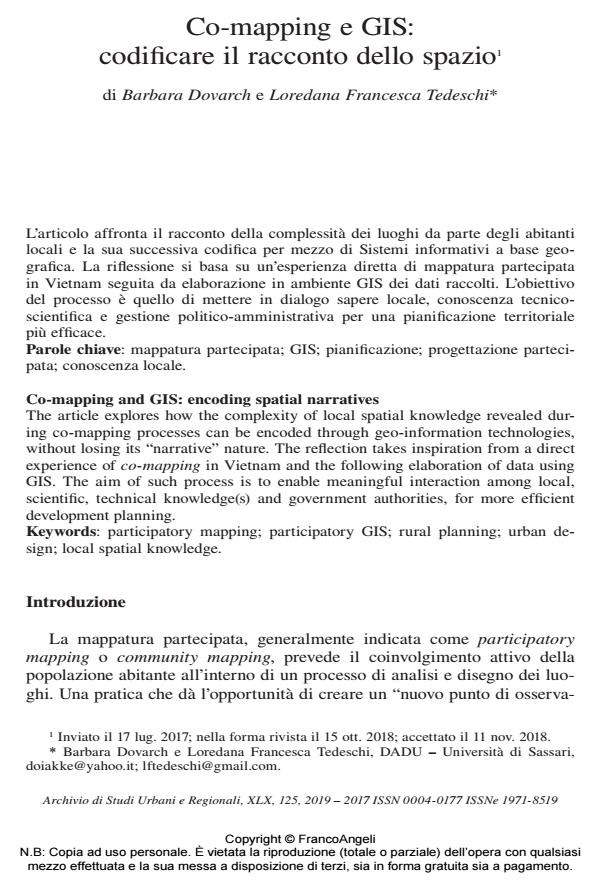Co-mapping e GIS: codificare il racconto dello spazio
Titolo Rivista ARCHIVIO DI STUDI URBANI E REGIONALI
Autori/Curatori Barbara Dovarch, Loredana Francesca Tedeschi
Anno di pubblicazione 2019 Fascicolo 2019/125
Lingua Italiano Numero pagine 26 P. 68-93 Dimensione file 361 KB
DOI 10.3280/ASUR2019-125004
Il DOI è il codice a barre della proprietà intellettuale: per saperne di più
clicca qui
Qui sotto puoi vedere in anteprima la prima pagina di questo articolo.
Se questo articolo ti interessa, lo puoi acquistare (e scaricare in formato pdf) seguendo le facili indicazioni per acquistare il download credit. Acquista Download Credits per scaricare questo Articolo in formato PDF

FrancoAngeli è membro della Publishers International Linking Association, Inc (PILA)associazione indipendente e non profit per facilitare (attraverso i servizi tecnologici implementati da CrossRef.org) l’accesso degli studiosi ai contenuti digitali nelle pubblicazioni professionali e scientifiche
L’articolo affronta il racconto della complessità dei luoghi da parte degli abitanti locali e la sua successiva codifica per mezzo di Sistemi informativi a base geografica. La riflessione si basa su un’esperienza diretta di mappatura partecipata in Vietnam seguita da elaborazione in ambiente GIS dei dati raccolti. L’obiettivo del processo è quello di mettere in dialogo sapere locale, conoscenza tecnicoscientifica e gestione politico-amministrativa per una pianificazione territoriale più efficace.
Parole chiave:Mappatura partecipata; GIS; pianificazione; progettazione partecipata; conoscenza locale.
- Triggering Active Communities for Cultural Creative Cities: The “Hack the City” Play ReCH Mission in the Salerno Historic Centre (Italy) Maria Cerreta, Gaia Daldanise, Ludovica La Rocca, Simona Panaro, in Sustainability /2021 pp.11877
DOI: 10.3390/su132111877
Barbara Dovarch, Loredana Francesca Tedeschi, Co-mapping e GIS: codificare il racconto dello spazio in "ARCHIVIO DI STUDI URBANI E REGIONALI" 125/2019, pp 68-93, DOI: 10.3280/ASUR2019-125004